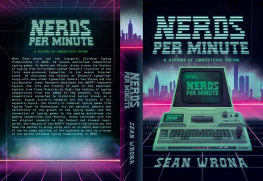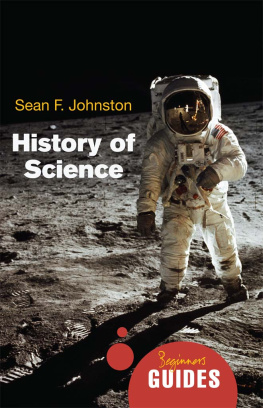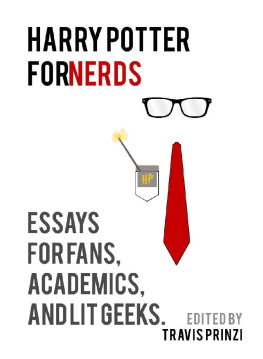Sean Wrona - Nerds per Minute: A History of Competitive Typing
Here you can read online Sean Wrona - Nerds per Minute: A History of Competitive Typing full text of the book (entire story) in english for free. Download pdf and epub, get meaning, cover and reviews about this ebook. year: 2021, genre: Detective and thriller. Description of the work, (preface) as well as reviews are available. Best literature library LitArk.com created for fans of good reading and offers a wide selection of genres:
Romance novel
Science fiction
Adventure
Detective
Science
History
Home and family
Prose
Art
Politics
Computer
Non-fiction
Religion
Business
Children
Humor
Choose a favorite category and find really read worthwhile books. Enjoy immersion in the world of imagination, feel the emotions of the characters or learn something new for yourself, make an fascinating discovery.
- Book:Nerds per Minute: A History of Competitive Typing
- Author:
- Genre:
- Year:2021
- Rating:5 / 5
- Favourites:Add to favourites
- Your mark:
- 100
- 1
- 2
- 3
- 4
- 5
Nerds per Minute: A History of Competitive Typing: summary, description and annotation
We offer to read an annotation, description, summary or preface (depends on what the author of the book "Nerds per Minute: A History of Competitive Typing" wrote himself). If you haven't found the necessary information about the book — write in the comments, we will try to find it.
Sean Wrona: author's other books
Who wrote Nerds per Minute: A History of Competitive Typing? Find out the surname, the name of the author of the book and a list of all author's works by series.
Nerds per Minute: A History of Competitive Typing — read online for free the complete book (whole text) full work
Below is the text of the book, divided by pages. System saving the place of the last page read, allows you to conveniently read the book "Nerds per Minute: A History of Competitive Typing" online for free, without having to search again every time where you left off. Put a bookmark, and you can go to the page where you finished reading at any time.
Font size:
Interval:
Bookmark:
NERDS PER MINUTE
A HISTORY OF COMPETITIVE TYPING
SEAN WRONA
Nerds per Minute: A History of Competitive Typing
Copyright 2021 Sean Wrona
All rights reserved. No portion of this book may be reproduced in any form without permission from the publisher, except as permitted by U.S. copyright law. For permissions contact: sean.wrona@gmail.com
Cover by David Coln.
ASIN: B09GN9TPC9
to Byron Bernstein, Carlo Parisi, and Kevin Tejan
TABLE OF CONTENTS
THE CURIOSITY BREEDING JOKER
The fifty-second man to invent the typewriter was Christopher Latham Sholes of Milwaukee. Most encyclopedias refer to him as the typewriters father, which is fitting enough despite the crowd that was there ahead of him. Sholess was the first practical commercial machine.
- Bruce Bliven, The Wonderful Writing Machine , 1954
O nce upon a time in postbellum Milwaukee, there lived a man named Christopher Latham Sholes. He was the son of Catherine, a descendant of Mayflower passengers John and Priscilla Alden, and Orrin, a cabinetmaker and War of 1812 veteran. After the war ended, Orrin received a tract of farmland as a reward for his military service and he moved from Connecticut to a farm near Mooresburg, Pennsylvania where Sholes was born on Valentines Day in 1819. When he was four, his family moved to the nearby borough of Danville, where he worked in Orrins shop while attending Hendersons school. Orrin trained him and his three brothers in the art of printing, and he and his older brother Charles took to it especially well as both of them became apprentices at newspapers in their teens and twenties. Eventually they moved to Wisconsin in the late 1830s before it became a state. At the time it was largely unsettled and it had fewer than 30,000 residents according to interpolations from census data. Sholes would go on to invent the worlds first typewriter that would be produced on a mass scale after James Densmore and George Washington Newton Yost formed a company to sell the machines and licensed E. Remington and Sons, a manufacturer of guns and sewing machines, to produce them in the early 1870s.
Sholess other brother Henry published the Wisconsin Democrat in Green Bay and at the age of eighteen, he joined them and worked as a printer. Eventually, Charles bought stakes in other newspapers such as the Wisconsin Enquirer and the Southport Telegraph ; he tapped Christopher, who generally went by the name C. Latham Sholes, to run the Telegraph and he edited that newspaper for most of the 1840s and 1850s. Southport eventually became the city of Kenosha, Wisconsin and the Sholes brothers became important power players in that citys early history (Charles even became its third mayor). But for C. Latham, his editorship of the Telegraph would be a launchpad for his side gig as an inventor, which brought him more lasting fame.
It is a great tradition in American history to venerate the first person to mass produce a product instead of its actual inventor. Bill Gates didnt invent the operating system, Steve Jobs didnt invent the graphical user interface, and Elon Musk didnt invent the electric car, but far fewer people know the names of the people who did. The typewriter is arguably another such case. Bruce Blivens 1954 book The Wonderful Writing Machine , which is considered one of the definitive histories of the mechanical typewriter, is quite clear on this point. In the chapter quote, Bliven claims that Sholes was only the 52nd person to invent a typewriter, yet it would become inextricably linked with him to this day because his was the first typewriter produced on a mass scale and also the machine that had the greatest influence on future typewriters layout and design. Sholes was also the first inventor to call his machine a typewriter (although the term was originally a capitalized and hyphenated brand name: Type-Writer.) However, the more general idea of a machine that mechanically imprints letters onto sheets of paper predated Sholes by more than a century.
Sholes was neither the first person in the Anglophone world nor even the first American to invent the idea of a typewriter. On January 7, 1714, Queen Anne issued Henry Mill the first patent for a typewriter in English. The patent granted him the right to build
an artificial machine or method for the impressing or transcribing of letters singly or progressively one after another, as in writing, whereby all writings whatsoever may be engrossed in paper or parchment so neat and exact as not to be distinguished from print; that the said machine or method may be of great use in settlements and publick records, the impression being deeper and more lasting than any other writing, and not to be erased or counterfeited without manifest discovery.
Although the Queen granted Mill an exclusive right to manufacture typewriters for the next fourteen years, it remains open to question whether he actually built one or merely conceptualized the idea. No prototypes or even drawings of Mills machine have lasted to the present day and the patent is the only evidence that still exists. However, over the next century and a half, numerous early typewriter models were independently invented by many people around the globe. According to Bliven, several of these were designed primarily to teach blind people to type or to read; Pingerons machine was designed to emboss letters for the blind to read with their finger tips, anticipating the invention of Braille shortly thereafter.
William Austin Burt of Mount Vernon, Michigan, was the first American to patent a typewriter on July 23, 1829. A jack-of-all-trades type who created a variety of inventions, he invented a typewriter solely as an attempt to save himself time with his paperwork. He never viewed it as one of his major accomplishments. Growing up on farms in rural Massachusetts and New York in the late 1790s and early 1800s, he did not have the opportunity to go to school past the age of twelve but he had an unshakable thirst for knowledge. When not serving as a farmhand, he got his hands on any book he could find. He was so obsessed with making time to read that according to Bliven,
[h]is first invention at the age of twelve, was a book-holder which enabled him to use both hands to work on the shingles with a drawshave without having to stop reading about ships and sailors.
Despite being unable to find an astronomy textbook, Burt used sun and moon tables from a navigation almanac to build his own sextant at age fourteen. His mom talked him out of his dreams of becoming a seaman, but he remained interested in navigation and became a land surveyor. He would eventually invent the first solar compass that used the sun to establish direction instead of the earths magnetic attraction. Burts solar compass would be used by government surveyors for over a century. He eventually was appointed U.S. Deputy Surveyor, associate justice of the Macomb County court, and postmaster of his hometown Mount Vernon, and he went on to personally survey much of Michigan himself. Subsequently, he discovered an iron ore with a magnetic compass and was pleased to find that his solar compass still worked even as the magnetic compasses malfunctioned. In his later life he became a Michigan legislator, popularized the idea of a canal connecting Lakes Michigan and Huron, and invented an equatorial sextant.
Although Burt considered the typewriter a minor footnote to his career personally, it was important regardless. Struggling to find surveying work in his mid-career, he built flour mills and sawmills and even his own log cabin and was eventually elected to Michigans Territorial Legislative Council, which resulted in him accumulating more paperwork than he could handle. That inspired him to build a typewriter. Although Burt was a man of many talents, unlike Sholes he was not a newspaperman. However, he was friends with John Pitts Sheldon, who founded the Detroit Gazette and later became the first editor of the Detroit Free Press . Sheldon gave him some type for him to model the printing of type. He built his new invention, which he called a typographer (essentially a direct Latin translation of the word typewriter) in his personal workshop-shed. The device was almost entirely made of wood and did not consist of typebars unlike future mechanical typewriters. Instead of pressing keys to activate typebars and print letters onto paper, Burts idea was to print all the characters on a rotating, semicircular wheel and have the user spin the wheel until the correct character was selected. Choosing a letter in this way resulted in a lever striking the paper and printing that letter. The typographers main drawback was that using it was slower than handwriting. This is one of the main reasons none of the previous proto-typewriters really took off before Sholess. While many of them printed neater letters than most peoples handwriting, few if any of them actually increased the speed of writing. You could very reasonably argue that writing on these earlier machines wasnt typing at all certainly not by the modern definition. That would change with Sholess typewriter.
Next pageFont size:
Interval:
Bookmark:
Similar books «Nerds per Minute: A History of Competitive Typing»
Look at similar books to Nerds per Minute: A History of Competitive Typing. We have selected literature similar in name and meaning in the hope of providing readers with more options to find new, interesting, not yet read works.
Discussion, reviews of the book Nerds per Minute: A History of Competitive Typing and just readers' own opinions. Leave your comments, write what you think about the work, its meaning or the main characters. Specify what exactly you liked and what you didn't like, and why you think so.








